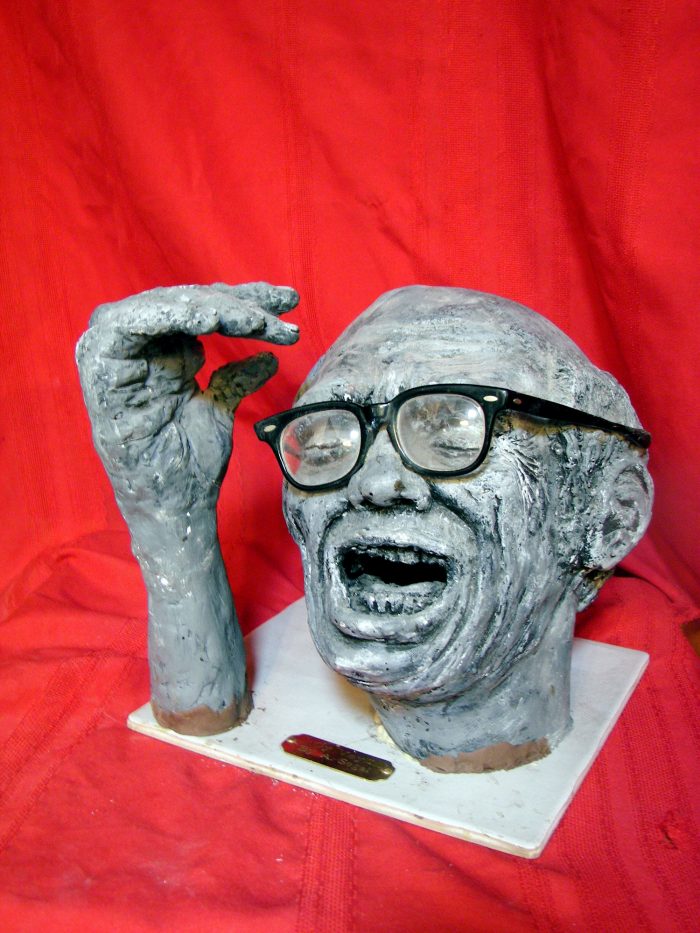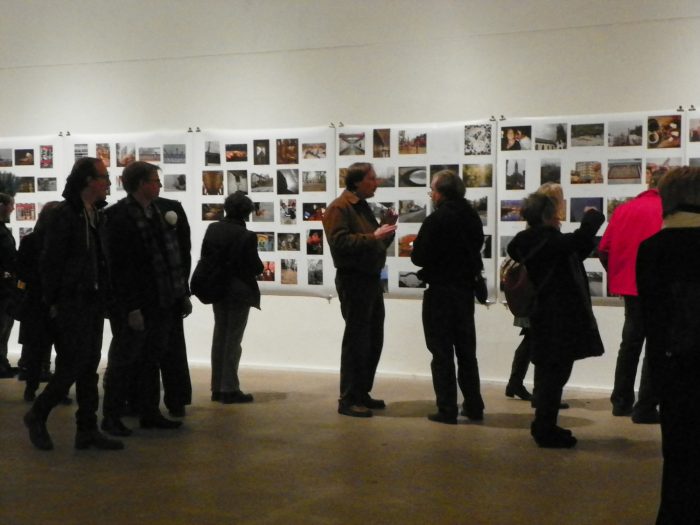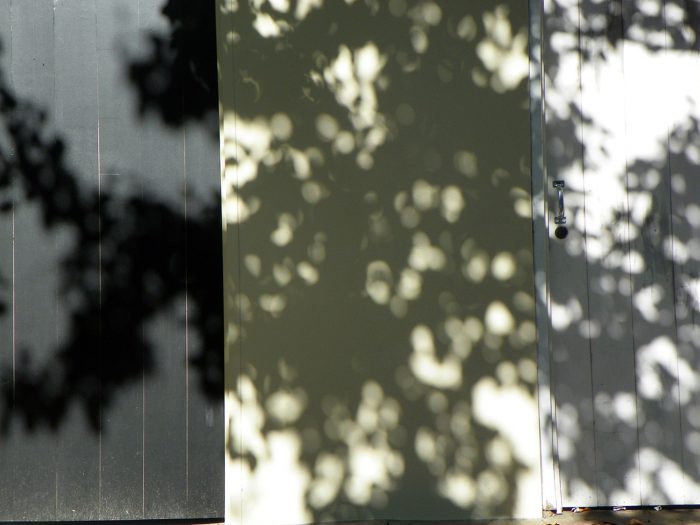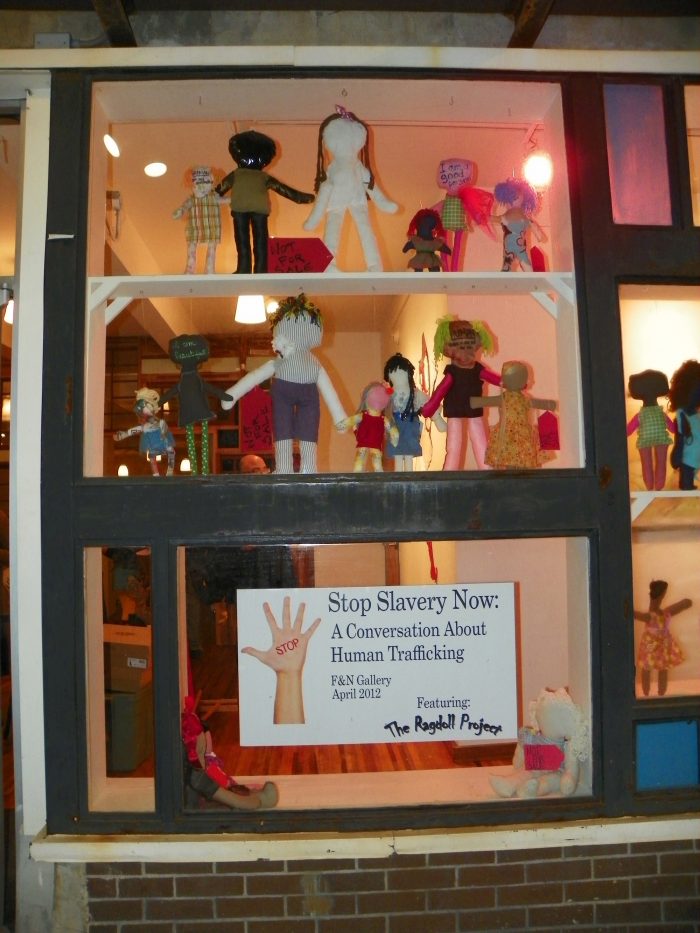Arnie Segal, sculpture
Social Practice Art
Social Practice Art is a movement in contemporary art that has been embraced by the Philadelphia art community as a way to communicate with an audience in a unique language of visual constructs, memes, semiotics and activism. Each of these components are the plastic elements of Social Practice Art, plastic meaning the combination of formulas, materials and actions that result from actualizing an idea, instead of line, space, color, and light as in a visual image, Social Practice Artists manipulate concepts, develop and mobilize action plans, create experiences, and provoke conversation about societal issues.
I was inspired to talk about Social Practice Art when Eileen Eckstein asked me to present at the monthly meeting of the Photographic Society of Philadelphia at the Plastic Club. I had recently viewed a show at Da Vinci Art Alliance called Look At Us and I was inspired by how the artists used visual art to plastically transform information that is on it’s surface is ugly and sad with empathy and education. As an arts blogger I have posted dozens of stories that I categorize as Social Practice Art, from grass roots organizations like Women’s Caucus for Art to main stream art institutions like The Philadelphia Museum of Art, with art shows and events tackling issues such as child sex slavery, gun violence, poverty, addiction, racism, hunger, incarceration, gay rights, and disability rights, the list is endless.
The Look at Us show at Da Vinci Art Alliance was about misogyny, violence against women, White Nationalism, and mass murder.
I wrote in my review, “The collection of artwork addresses the theme with an experience design that is engaging, thought provoking, and beautiful; the gallery is arranged to create a flow between art forms, concepts, and compositions. A meme is a unit of cultural information that spreads like a virus from mind to mind; cultural ideas, biological and social anxieties, historic resonance, and deeply packed psychological concepts are transmitted with language, image, gesture and tone. Presenting an art exhibit with disturbing imagery challenges the artists to confront ideas with a plastic language of line, light, shape, and color; social practice connects the conceptual context to an inquiry through mark making, composition, and activity by the artist. Social Practice is an important art movement in the 21st Century, artists are addressing ideas that permeate society that feel too hard to look at, too big to wrap your head around, too ugly and mean that words are not enough to explain.”
Last April The Philadelphia Museum of Art presented a Social Practice art event: “a project entitled Philadelphia Assembled will manifest in a series of activities and actions throughout the city to illuminate and amplify a broad set of hopes, visions, and questions about Philadelphia’s future. Initiated by artist Jeanne van Heeswijk, working alongside an extensive network of collaborators—among them artists, writers, builders, storytellers, gardeners, healers, and activists—Philadelphia Assembled aims to shape a collective narrative about our city and some of the most urgent issues it faces at a time of heightened transformation. Deeply integrated into the fabric of the Museum, the project also questions the place of this institution in the midst of this change.”
In April 2012 I wrote a blog post about The Ragdoll Project titled Stop Slavery Now: “The Ragdoll Project is meant to create awareness for human trafficking. Joanna Fulginitti described the production to DoN, “We set up sewing machines, we used donated fabrics and we just made dolls. The dolls will be sold and all the money will go to Dawn’s Place which is a shelter for victims of human trafficking in Philadelphia. Dawn’s Place is the only place in Philadelphia that helps victims of sex trafficking specifically. And they do need money, they need donations, so we’re going to sell all the dolls and donate all the money.”
“The Women’s Caucus for Art was founded in 1972 in connection with the College Art Association (CAA). WCA is a national member organization unique in its multidisciplinary, multicultural membership of artists, art historians, students, educators, and museum professionals.
The mission of the Women’s Caucus for Art is to create community through art, education, and social activism. WCA is committed to recognizing the contribution of women in the arts; providing women with leadership opportunities and professional development; expanding networking and exhibition opportunities for women; supporting local, national and global art activism; and advocating for equity in the arts for all.” – Women’s Caucus for Art
Philly Photo Day
What is Social Practice Art?
Wikipedia defines Social Practice Art as: “Social practice is an art medium that focuses on engagement through human interaction and social discourse. Since it is people and their relationships that form the medium of such works – rather than a particular process of production – social engagement is not only a part of a work’s organization, execution or continuation, but also an aesthetic in itself: of interaction and development. Socially engaged art aims to create social and/or political change through collaboration with individuals, communities, and institutions in the creation of participatory art. The discipline values the process of a work over any finished product or object.
Artists working in social practice co-create their work with a specific audience or propose critical interventions within existing social systems that inspire debate or catalyze social exchange. The large overlap between social practice and pedagogy, the method and practice of teaching, especially as an academic subject or theoretical concept, demonstrates the need for art education to embrace collaborative practice. Social practice work focuses on the interaction between the audience, social systems, and the artist through aesthetics, ethics, collaboration, methodology, antagonism, media strategies, and social activism. The social interaction component inspires, drives, or, in some instances, completes the project. Although projects may incorporate traditional studio media, they are realized in a variety of visual or social forms (depending on variable contexts and participant demographics) such as performance, social activism, or mobilizing communities towards a common goal. The diversity of approaches pose specific challenges for documenting social practice work, as the aesthetic of human interaction changes rapidly and involves many people simultaneously. Consequently, images frequently fail to do justice to the engagement and interactions that take place during a project.”
I first became involved with Social Practice Art with the annual Arts Ability Art Sale and Exhibition at Bryn Mawr Rehab in Paoli. My late fiend, Arnie Segal, a disabled artist activist and sculptor encouraged me to enter my artwork and I have now been participating for ten years, the show is in it’s 23rd season. The qualities the organization embraces and promotes utilize the Plastic Elements of Social Practice to raise awareness, educate, promote, and reward artists and patrons for participating in an event with a particular agenda.
Sky Holes, DoN Brewer, photograph, Art Ability at Bryn Mawr Rehab
The show is expansive, known as the largest exhibition of it’s kind, in addition to the art exhibition the organization promotes artists outside of Bryn Mawr Rehab in spotlight shows, one of my photographs was juried into the show later was included in an exhibition at the Delaware Museum of Art. Two of my paintings are in the consignment collection, the installation has artwork shown at wheelchair height, and another painting was included in an exhibition at the West Collection where I was invited to speak about being a participating artist and the importance of showcasing art by people who live with disabilities. A few weeks ago I was invited to be a guest juror by the selection committee, we looked at nearly 1000 artworks, and voted based on the quality of the artwork and not the disability of the artist. The term Disabled Artist is an information rich meme, let’s unpack it.
What is a meme? With the advent of social media the term has taken on a meaning more closely related to jokes or puns but the origins of the idea of the meme is more scientific than simply entertaining.
The word meme originated with Richard Dawkins‘ 1976 book The Selfish Gene. Dawkins wrote that evolution depended not on the particular chemical basis of genetics, but only on the existence of a self-replicating unit of transmission—in the case of biological evolution, the gene. For Dawkins, the meme exemplified another self-replicating unit with potential significance in explaining human behavior and cultural evolution. Although Dawkins invented the term ‘meme’ and developed meme theory, the possibility that ideas were subject to the same pressures of evolution as were biological attributes was discussed in Darwin’s time. T. H. Huxley claimed that ‘The struggle for existence holds as much in the intellectual as in the physical world. A theory is a species of thinking, and its right to exist is coextensive with its power of resisting extinction by its rivals.’
Dawkins used the term to refer to any cultural entity that an observer might consider a replicator. He hypothesized that one could view many cultural entities as replicators, and pointed to melodies, fashions and learned skills as examples.
The word itself is a replicator: me me. For example: the opening melody of Beethoven’s Fifth, mini-skirts, the Twist or Picasso. Each of these terms is loaded with data and information that explodes with cultural ideas that cascade and connect across diverse memories, beliefs, and experience. Mini-skirt provokes an era of time not just a garment, The Twist makes you think of swiveling your hips and dancing alone, Da Da Da Dum plays out in your head with full orchestra automatically.
Memes generally replicate through exposure to humans, who have evolved as efficient copiers of information and behavior. Because humans do not always copy memes perfectly, and because they may refine, combine or otherwise modify them with other memes to create new memes, they can change over time. Dawkins likened the process by which memes survive and change through the evolution of culture to the natural selection of genes in biological evolution.
Dawkins defined the meme as a unit of cultural transmission, or a unit of imitation and replication, but later definitions would vary. The lack of a consistent, rigorous, and precise understanding of what typically makes up one unit of cultural transmission remains a problem in debates about memetics. In contrast, the concept of genetics gained concrete evidence with the discovery of the biological functions of DNA. Meme transmission requires a physical medium, such as photons, sound waves, touch, taste, or smell because memes can be transmitted only through the senses.
Dawkins noted that in a society with culture a person need not have descendants to remain influential in the actions of individuals thousands of years after their death: “But if you contribute to the world’s culture, if you have a good idea…it may live on, intact, long after your genes have dissolved in the common pool. Socrates may or may not have a gene or two alive in the world today, as G.C. Williams has remarked, but who cares? The meme-complexes of Socrates, Leonardo, Copernicus and Marconi are still going strong.” – Wikipedia
In the book Virus of the Mind by Richard Brodie, the author says, ““How about this one: you are simply a distinction—a meme—invented because it was convenient to talk about the parts of the universe that feel pain when hit with a hammer. To the universe, there’s no you . . . or human beings or giraffes or solar systems or galaxies. All those are human-invented distinctions. They are all memes.”
So what does the term Disabled Artist mean in a memetic sense? What is the image that appears in your mind that describes that person? What is the person like and what type of art do they make? What is the stereotype when you combine disability with art making? Does the term evoke empathy or skepticism? Through Art Ability I have met artists with various physical and mental problems from an entrepreneur named Gayle who describes herself as “a high functioning autistic”, a blind sculptor, mouth painters, photographers with traumatic brain injuries, people that literally can only move one finger. The term Disabled Artist incorporates so many categories of the human condition that it becomes jumbled and polarizing. I have participated in these shows because I have an incurable chronic autoimmune disease but I struggle with self identifying as disabled, even though I know I will probably never be able to hold a job for long, because it means I’ve given up hope. As a meme the term is like a fractal with spiraling threads of information each spooling out their data, each with a distinct set of their own plastic elements.
We can break down the context of the meaning of these words, terms and signs through semiotics.
“Semiotics (also called semiotic studies) is the study of meaning-making, the study of sign process (semiosis) and meaningful communication. Semiotics includes the study of signs and sign processes, indication, designation, likeness, analogy, allegory, metonymy, a figure of speech in which a thing or concept is referred to by the name of something closely associated with that thing or concept, metaphor, symbolism, signification, and communication.
The semiotic tradition explores the study of signs and symbols as a significant part of communications. Different from linguistics, semiotics also studies non-linguistic sign systems.
Pictorial semiotics is intimately connected to art history and theory. It goes beyond them both in at least one fundamental way, however. While art history has limited its visual analysis to a small number of pictures that qualify as “works of art”, pictorial semiotics focuses on the properties of pictures in a general sense, and on how the artistic conventions of images can be interpreted through pictorial codes. Pictorial codes are the way in which viewers of pictorial representations seem automatically to decipher the artistic conventions of images by being unconsciously familiar with them.”
Picture Idea- line light space color
The Ragdoll Project
Activism
“Activism consists of efforts to promote, impede, direct, or intervene in social, political, economic, or environmental reform with the desire to make changes in society. Forms of activism range from writing letters to newspapers, petitioning elected officials, running or contributing to a political campaign, preferential patronage (or boycott) of businesses, and demonstrative forms of activism like rallies, street marches, strikes, sit-ins, or hunger strikes.
Activism may be performed on a day-to-day basis in a wide variety of ways, including through the creation of art (artivism), computer hacking (hacktivism), or simply in how one chooses to spend their money (economic activism). For example, the refusal to buy clothes or other merchandise from a company as a protest against the exploitation of workers by that company could be considered an expression of activism. However, the most highly visible and impactful activism often comes in the form of collective action, in which numerous individuals coordinate an act of protest together in order to make a bigger impact. Collective action that is purposeful, organized, and sustained over a period of time becomes known as a social movement.
Historically, activists have used literature, including pamphlets, tracts, and books to disseminate their messages and attempt to persuade their readers of the justice of their cause. Research has now begun to explore how contemporary activist groups use social media to facilitate civic engagement and collective action combining politics with technology.” – Wikipedia
Liz Krick
I forwarded many of you a chain letter about women blacking out their profile pics for the day to stand against domestic abuse. I don’t usually send chain letters, but at first I thought it was a powerful message and wanted to engage it. However, after speaking with a few of the people I sent it to, I understand where such a message is lacking. Two of the arguments that stood out to me with regards to this action. One was how an action calling specifically for “women” to participate can neglect trans and non-binary folks in our communities. The other was that if we as femmes are fighting to be more visible, than such an action becomes somewhat counterintuitive by making us less visible. Thank you to everyone who gave me feedback about this online action.
by DoN Brewer
Like DoNArTNeWs Philadelphia Art News Blog on facebook
Follow DoN on Twitter @DoNNieBeat58
@donniebeat on Instagram
More DoNArTNeWs at www.brewermultimedia.com
Affiliate Marketing Disclosure Statement
Donate via safe and secure PayPal in the sidebar.
DoNArTNeWs celebrating ten years reporting on Philadelphia art and artists.

 Philly Photo Day
Philly Photo Day





{ 0 comments… add one now }
You must log in to post a comment.